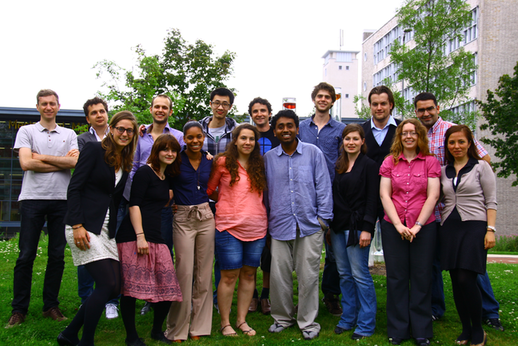Team:TU-Delft
From 2012.igem.org
| Line 111: | Line 111: | ||
<center><iframe src="http://www.thenewview.eu/igem/wiki/photos/photoslide.html" style="width:580px; height:330px; border:0;"></iframe></center> | <center><iframe src="http://www.thenewview.eu/igem/wiki/photos/photoslide.html" style="width:580px; height:330px; border:0;"></iframe></center> | ||
| - | |||
| - | |||
| - | |||
| - | |||
| - | |||
| - | |||
| - | |||
| - | |||
| - | |||
| - | |||
| - | |||
| - | |||
| - | |||
| - | |||
<center> | <center> | ||
| Line 133: | Line 119: | ||
<hr/> | <hr/> | ||
<h5> Do not forget to get our app at your phone!! Stay informed about all the updates in our wiki through your android !! To download it press <a href="https://play.google.com/store/apps/details?id=com.vansteinengroentjes.apps.igem" target="_blank">here</a> </h5><br/> | <h5> Do not forget to get our app at your phone!! Stay informed about all the updates in our wiki through your android !! To download it press <a href="https://play.google.com/store/apps/details?id=com.vansteinengroentjes.apps.igem" target="_blank">here</a> </h5><br/> | ||
| - | |||
<hr/> | <hr/> | ||
Revision as of 06:36, 26 October 2012


|
Snifferomyces:Yeast with a sense of smell
G-protein–coupled receptors (GPCRs) form a remarkable modular system that allows transmission of a wide variety of signals over the cell membrane, between cells and over long distances in the human body. The GPCRs mediate a flow of information that tells the inside of cells about the conditions on their outside, which includes signals from neurotransmitters (such as adrenaline and dopamine), hormones (such as follicle stimulating hormone, which helps control ovulation), and even light in our eyes and smell molecules in our noses, thus acting as both the gatekeepers and molecular messengers of the cell. There are around 800 known human GPCRs, of which about half are the olfactory receptors that allow us to distinguish thousands of different aromas. This basic molecular mechanism of olfactory receptor activation is conserved evolutionarily from yeast to humans.Drawing inspiration from the sniffer rats which can be trained to sniff out unexploded landmines and tuberculosis, as part of this year’s iGEM competition we are aiming to use this molecular mechanism to develop a universal olfactory system for the purpose of characterization of volatile compounds, by introducing olfactory receptor gene fusions into Saccharomyces cerevisiae and linking these receptors to a transcription response. |
Advanced to the World Championship Jamboree!!
Snifferomyces: A Tuberculosis Screening Automaton

The 2012 project of the TU Delft iGEM team, draws inspiration from the sniffer rats which can be trained to sniff out unexploded landmines and tuberculosis. Tuberculosis infects around 8 million people a year and kills approximately 2 million. Drugs to treat tuberculosis have been around for a long time, so a rapid diagnosis system can help curb the spread of the disease. This year our team takes the first steps to make for this problem a screening olfactory automation!

- Localization of receptor NR1 using FLAG
- Activation of receptor NR1 by the ligand niacin
- Activation of the reporter by the native ligand alpha pheromone
- Providing a platform to swap receptors, promoters and terminators more easy
- Device design for yeast olfactory detector
- Deterministic and stochastic simulations and property analyses of pathway model
- Data fitting for deterministic pathway model
- Prediction of a ligand-binding niche within the human niacin receptor 1 with Molecular Dynamics simulations
- To find stake holders and create awareness among our project, we presented our project to a very large audience by participating in several events like Llowlab on Lowlands and the Floriade.
- Our main goal is to innovate a diagnostic tool for tuberculosis, one of the major health issues in the world
- We have provided the iGEM Paris 2012 team two Biobricks. Together with the Amsterdam team we were able to organize a crash course on the area of synthetic biology and we were honored to attend the LIFE-symposium with the Cambrigde 2010-team.
 "
"














